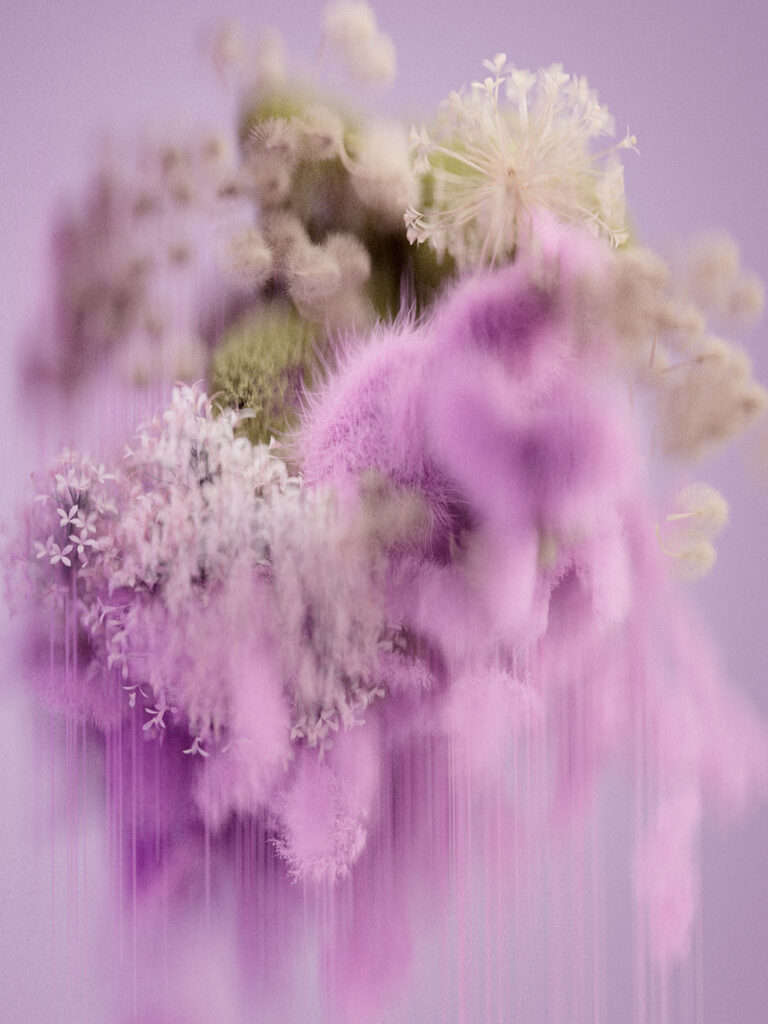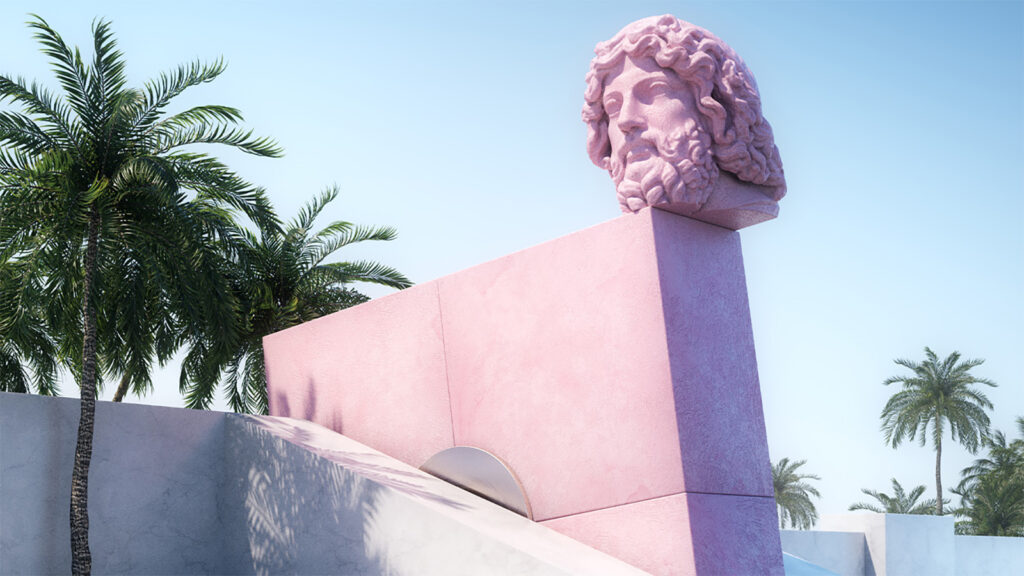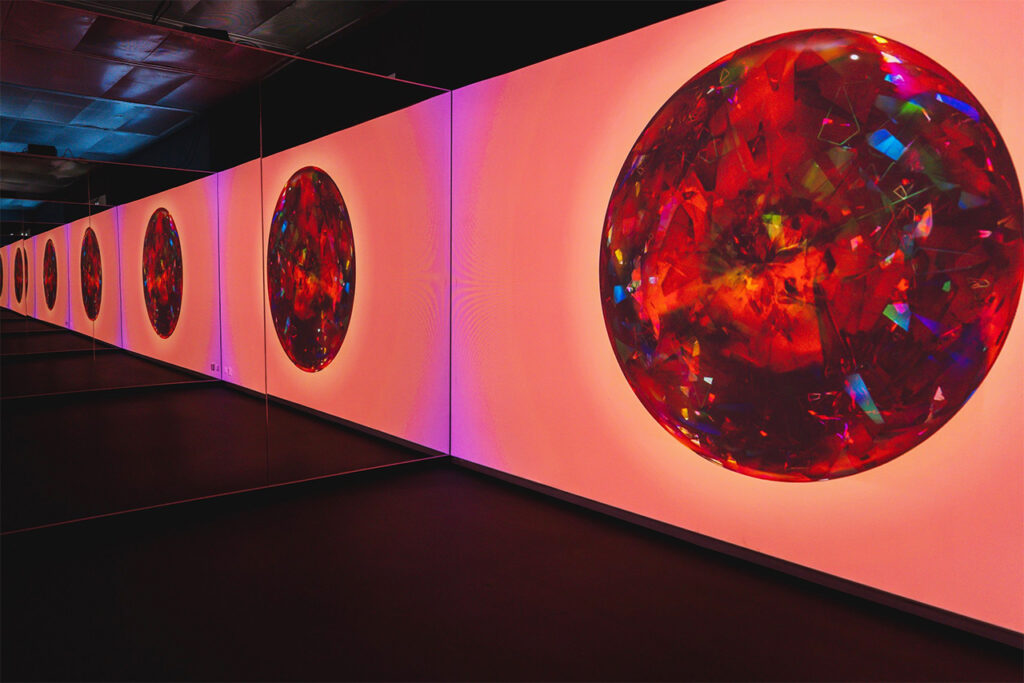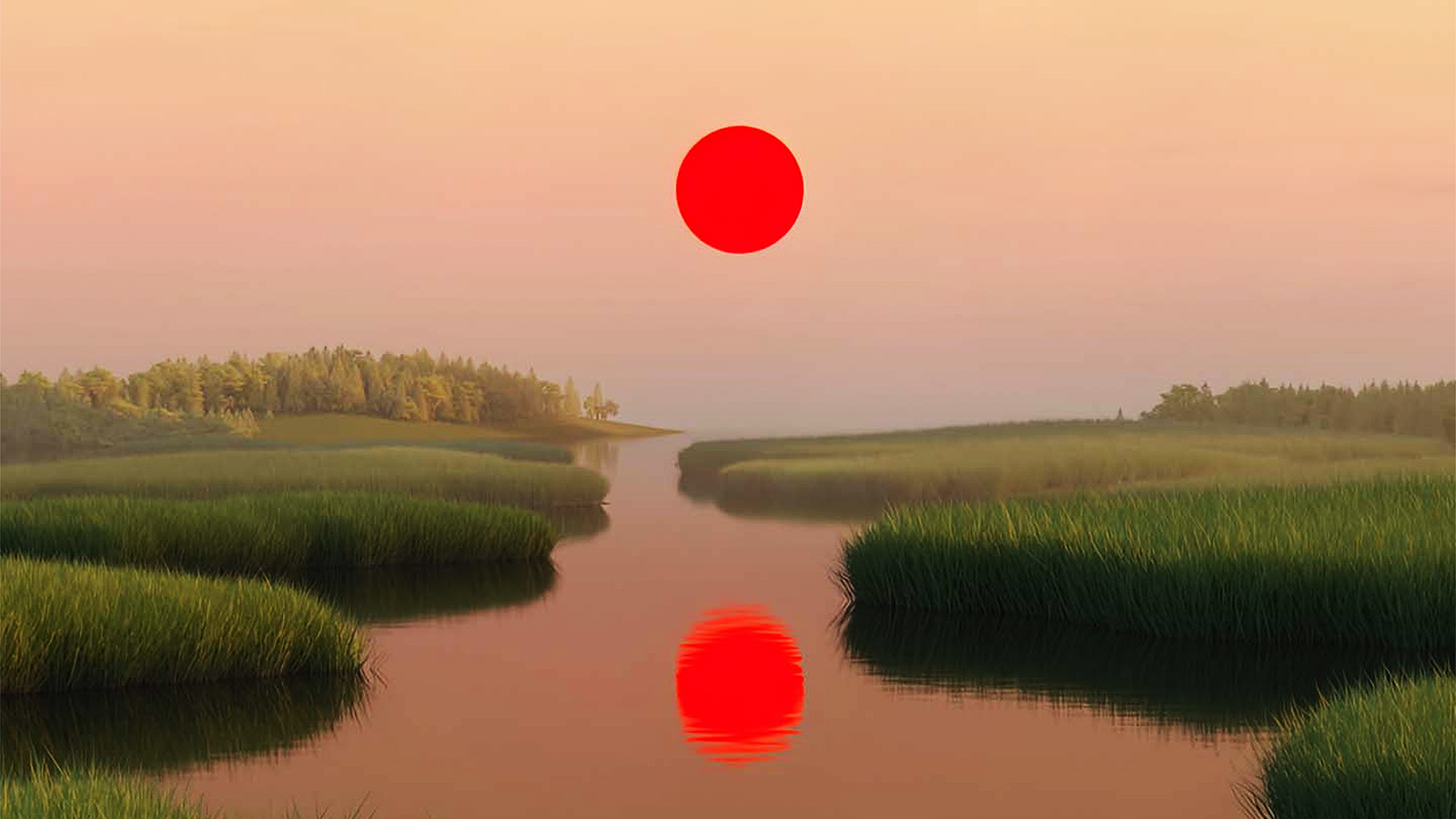In April, Fotografiska Stockholm became the first Swedish institution to stage a NFT exhibition when it opened Somewhere Ethereal. As indicated by its title, the show, which runs until August 21, unlocks a transportive and otherworldly experience through works by such leading digital artists as Krista Kim, Snowfro, and IX Shells. Never mind the on-screen presentation — the vibe here, as participating artist Andreas Wannerstedt put it, is intended to “to lull the viewer into a meditative state.”
Such a reflection on NFT art might be a first for the contemporary photography museum, but Fotografiska is no stranger to the realm of new media. Having organized “scenographic” exhibitions like Tobias Gremmler’s The Changing Room, the venue is more than equipped — technologically and conceptually — for its first crypto art venture. “Since we have worked with digital art before, the question was more about, ‘What’s the difference between these latest digital works and the other kinds we exhibited before?’” says Jessica Jarl, Fotografiska’s Director of Global Exhibitions. “The difference is, of course, that these are linked to NFTs.”

Somewhere Ethereal showcases six works by digital artists including Andrés Reisinger’s Pollination series. Image: © Andrés Reisinger, “Pollen (spring),” 2022
There, Jarl also surfaces a key aspect of Somewhere Ethereal: an educational component, aimed at instructing audiences about the form and its possibilities. In this, Fotografiska has had an assist from its exhibition partner Somewhere Media, the digital media company that pitched and curated the show, and hosted an artist talk with Wannerstedt. “We wanted to present NFTs to wider audiences and Fotografiska’s visitors who are not necessarily educated in terms of digital art or NFTs,” says Mathieu Wothke, Founder of Somewhere. “We really wanted to offer them different types of works that still fit into the exhibition concept.”
While local artists such as Wannerstedt and Markus Magnusson (of Invisible Friends fame) have gained traction in the digital art space, NFT art remains a nascent scene and sector in Sweden compared to, say, regions like Singapore and Dubai. Somewhere Ethereal, then, might serve as an opening for the city’s cultural audiences and digital creators to get onboard via the established format of an exhibition. Before that happens, Jarl and Wothke discuss what went into Fotografiska’s first NFT showcase.
What has been fascinating to you as you learned about the NFT space?
Wothke: What I find fascinating is the value NFTs give to art. Many artists went from doing jobs for brands and campaigns to becoming full-time artists and getting lots of value in that. So I think it’s very interesting to consider how NFTs might truly change or help the creator economy.

“We wanted to present NFTs to wider audiences and Fotografiska’s visitors who are not necessarily educated in terms of digital art or NFTs,” says Mathieu Wothke. Image: Andreas Wannerstedt, “Sliding Zeus”
As a photography museum, what interested Fotografiska about NFTs?
Jarl: We are very interested in showcasing photography, but also digital work. When the NFT trend arose, we also wanted to explore that, because I think general audiences don’t know that much about what a NFT actually is. So it’s also about introducing this art form to our audience. We also want to inspire a more conscious world, which is one of our values and goals, so to showcase new kinds of works and present that to our audience feels very accurate.
What was the curatorial approach to Somewhere Ethereal?
Wothke: The idea was to find different artists aligned to the exhibition concept and idea. All of the artists are leading NFT artists who I like and who are only getting bigger and bigger. And even though these works are very different pieces, I think they also all work all together to bring the viewer into this digital parallel universe.

The exhibition uses projections and video mapping to display the works, with mirrors further enhancing the immersive experience. Image: Krista Kim, “Mirror of the Mind” / Kristakimstudio.com
What went into the build-out of the exhibition?
Jarl: For this exhibition, we projected the six different works on the walls, which is a common way, I would say, to present digital work. But we also have this special exhibition hall with a video screen that goes across all the walls in the room, like a 3D mapping system. For example, we’ve had Refik Anadol creating a special work for that space and showcased Isaac Julien’s Ten Thousand Waves. So it’s this very special space where you can have more of an immersive digital experience.
Wothke: I think that the fact that in this exhibition, with the NFTs displayed on big walls and with mirrors, it really creates a different feeling in how the viewer perceives it. It’s really an immersive and relaxing experience in a way. I think it’s very important to really think through how the art is going to be displayed, and how everything is going to impact and influence the viewer.
How was education worked into the exhibition, in terms of explaining the medium to visitors?
Jarl: Through the exhibition, we have text that explains NFTs at a very basic level, but we also invited them to an artist talk with the curator. We also had another talk earlier in the spring about NFTs where we’re invited guests who have worked in that area. Visitors have loved it: they think it’s very interesting, even if some are also very confused!
What key learnings have you taken away from hosting this NFT showcase?
Jarl: I think having a good technique in-house would be preferable. Also, if you are not that into the subject, work with an external curator or someone in that community who could help you organize and grow your knowledge.



